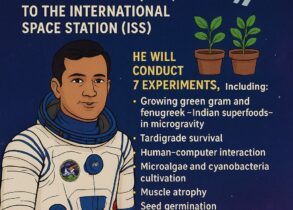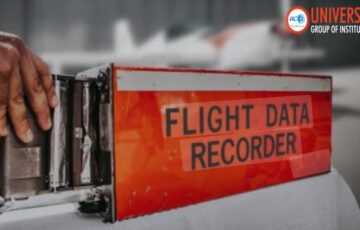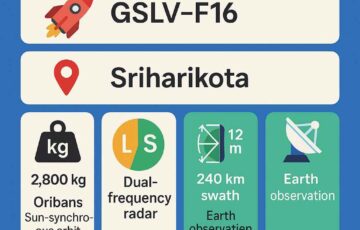New Bacterial Species Found on Tiangong Space Station: A Must-Know for UPSC & SSC
New Bacterial Species Found on Tiangong Space Station: A Must-Know for UPSC & SSC
A significant development in space microbiology has made headlines—Chinese scientists have discovered a previously unknown bacterial species named Niallia tiangongensis aboard the Tiangong Space Station. This breakthrough is important for aspirants of competitive exams like UPSC, SSC, CDS, NDA, CAPF, and State PSCs, especially in current affairs and Science & Tech sections. As this discovery bridges the gap between space exploration and aviation current affairs, it’s crucial for candidates to understand its implications in the broader context of India news today, including its relevance to flight incidents and air traffic control. The discovery also has implications for understanding microbial behavior during flight incidents and could potentially influence IndiGo news and other airline operations, particularly in light of recent events such as the emergency reported on IndiGo flight 6E 2142.
Why It’s in the News
During the Shenzhou-15 mission in May 2023, astronauts collected surface swabs from inside the Tiangong Station. These samples were later analyzed under China’s CHAMP program, much like how air traffic controllers monitor aircraft for safety. In March 2025, researchers published the formal classification of this new space-adapted bacterium, adding a new dimension to flight news today and airline news. This discovery highlights the importance of microbial studies not only in space but also in aviation safety, drawing parallels to how the Indian Air Force and commercial airlines like IndiGo monitor their aircraft environments to prevent any flight incident that could lead to a plane crash today in India.
The Director General of Civil Aviation and the Northern Area Control Centre play crucial roles in ensuring safe operations, similar to how space agencies monitor conditions on space stations. This research could potentially influence protocols for New Delhi to Srinagar flights and other domestic routes, especially in areas with challenging weather conditions like Poonch or near the international border. Recent Srinagar airport news today has highlighted the importance of such protocols in ensuring safe landings, particularly in light of incidents like cross-border shelling that can affect air travel in sensitive regions.
Scientific Importance of Niallia tiangongensis
Aerobic and spore-forming, allowing it to survive in harsh environments, similar to how aircraft are designed to withstand extreme conditions such as turbulence in flight or the hailstorm effect on aircraft. This resilience is particularly relevant for ensuring safe landings in challenging conditions, which is crucial for routes like the New Delhi to Srinagar flight that often face unpredictable weather.
Capable of gelatin hydrolysis, using it as a nutrient source in nutrient-scarce conditions, reminiscent of how pilots and flight crews must manage resources efficiently during long flights, adhering to strict flight crew protocols. This adaptability could provide insights for improving resource management on long-haul flights, such as those between New Delhi and Srinagar.
Forms biofilms, protecting it from radiation and oxidative stress, comparable to how aircraft are shielded against various environmental factors to prevent aircraft nose damage and ensure safe landing. This protective mechanism could inspire new safety features in aircraft design, potentially reducing the risk of emergency situations like the recent IndiGo flight emergency landing of flight 6E 2142.
Demonstrates how microbial life adapts to microgravity and cosmic radiation—vital for long-term space missions and potentially relevant for understanding microbial behavior during air turbulence or extended flight times on commercial airlines like IndiGo Airlines. This knowledge could be crucial in developing strategies to mitigate the effects of severe turbulence, which sometimes leads to near-death experiences for passengers, prompting religious supplications during moments of extreme fear.
How It Matters for Space Exploration and Aviation
Highlights the need to monitor microbial communities in space to protect astronaut health, drawing parallels to passenger safety concerns in commercial aviation, including during IndiGo flight emergency landings. This research could lead to improved sanitation protocols for both spacecraft and aircraft, potentially reducing the risk of in-flight health issues and ensuring safer travel experiences, even on routes passing near sensitive areas like Pathankot.
Can contribute to the development of bio-regenerative life support systems, which could have applications in improving air quality and waste management on long-haul flights, potentially influencing future pilot plane designs. These advancements could be particularly beneficial for routes like New Delhi to Srinagar flights, where varying altitudes and weather conditions pose unique challenges to achieving a safe landing.
Suggests potential applications in space biotechnology, including waste recycling and medicine, which could inspire innovations in aviation safety and aircraft maintenance inspection procedures. Such innovations might help prevent incidents that lead to aircraft grounding or emergency landings, reducing the likelihood of situations that might otherwise result in a plane crash today in India.
The study of these bacteria’s adaptation to extreme conditions could provide insights into managing severe turbulence and other challenging weather conditions faced by aircraft, potentially leading to improved weather diversion strategies. This knowledge could be especially valuable for flights operating in regions prone to unpredictable weather, such as the weather in Poonch or near the Line of Control, ensuring safer operations at airports like Srinagar airport.
This discovery not only advances our understanding of space microbiology but also has potential implications for aviation safety and technology. As we continue to explore both the skies and space, the lessons learned from Niallia tiangongensis could influence future developments in both fields. For UPSC and SSC aspirants, understanding these interconnections between space exploration, microbiology, and aviation current affairs is crucial for a comprehensive grasp of modern scientific advancements and their wide-ranging impacts, from the operations of IndiGo 6E flights to the protocols followed by the Northern Area Control Centre.
The implications of this research extend beyond scientific circles, potentially influencing public perception and policy-making. For instance, social media posts about turbulence videos or flight incidents might be better contextualized with this new understanding of microbial behavior in extreme conditions. Moreover, this knowledge could inform international cooperation in aviation safety, potentially affecting overflight clearance procedures and cross-border flight operations, such as those involving Pakistani airspace or Lahore control.
In conclusion, the discovery of Niallia tiangongensis aboard the Tiangong Space Station represents a significant advancement in our understanding of microbial adaptation in extreme environments. Its relevance extends from space exploration to aviation safety, potentially influencing everything from flight crew protocols to aircraft design. For students preparing for competitive exams, this topic offers a rich intersection of science, technology, and current affairs, demonstrating the interconnected nature of modern scientific discoveries and their practical applications in fields as diverse as space exploration and commercial aviation. The insights gained from this research could prove invaluable in enhancing safety measures for flights operating in challenging environments, such as those affected by cross-border tensions or extreme weather conditions, ultimately contributing to more secure and efficient air travel experiences for passengers on routes like the New Delhi to Srinagar flight, reducing the risk of flight incidents and ensuring safe landings even in the most challenging conditions.








